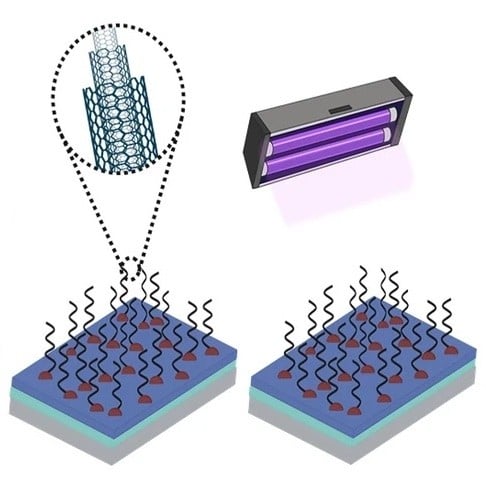A cross-disciplinary research team of MTU undergraduate students, graduate students and professors are co-authors of an article published in the Journal of Materials Research.
The article, titled “Conductive 3D nano-biohybrid systems based on densified carbon nanotube forests and living cells,” appears in the journal’s Early Career Scholars in Materials Science issue, 2024.
The research team worked with carbon nanotube (CNT) “forests,” groupings of carbon nanotubes on which conductive biohybrid (cell-material) systems can be developed. Working with fibroblasts or cardiomyocytes, the researchers integrated the cell cultures with the CNT forests coated with gelatin. The novelty of the work lies in the use of the 3D structure of CNT forests as the main part of the scaffold and the development of a conductive, porous, and 3D cardiac scaffold with high cytocompatibility. The results show that the scaffold could be used in applications ranging from organ-on-a-chip systems to muscle actuators.
Congratulations to the research team:
- Roya Bagheri, Ph.D. student (mechanical engineering-engineering mechanics)
- Alicia K. Ball, undergraduate student (chemical engineering)
- Masoud Kasraie, Ph.D. candidate (materials science and engineering)
- Aparna Chandra, master’s student
- Xinqian Chen, Ph.D. candidate (kinesiology and integrative physiology)
- Professor Ibrahim Miskioglu (ME-EM)
- Professor Zhiying Shan (KIP)
- Assistant Professor Parisa Abadi (ME-EM)
Bagheri, R., Ball, A.K., Kasraie, M. et al. Conductive 3D nano-biohybrid systems based on densified carbon nanotube forests and living cells. Journal of Materials Research (2023). https://doi.org/10.1557/s43578-023-01163-x
The original article is licensed under a Creative Commons Attribution 4.0 International License.
